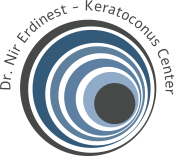Raw materials contact lenses Dr. Nir Erdinast
Types of contact lenses – the raw material
There is a basic division in connection with the raw material: contact lenses and soft contact lenses.
- Contact lenses
Lenses are also difficult as oil – the raw material has Modlos (stiffness) high and small for soft contact lenses. Small diameter lens cornea and lens are more likely to be emitted in relation to a soft lens. All contact lenses are lenses fixed (annual).
- Soft contact lenses
Soft contact lenses are larger, water and soft chelate much more here very comfortable lineup. Large soft contact lens corneal diameter.
Soft contact lenses are divided into two main types:
- Soft contact lenses hydrogel type
Hidorg’l type of contact lenses (and non-commercial behalf: polyHEMA) Soft contact lenses are the most common. This raw material is composed of a small number of monomers connected connection crossover creating polymer chain. This raw material is very hydrophilic, inexpensive to manufacture, soft and steady change of temperature and pH. These lenses have a very low stiffness able to absorb water. Type of hydrogel contact lenses is very dependent on water transport oxygen. As we increase the percentage of water in the lens so that the oxygen crimes but still exceed the amount of oxygen to pass through the hydrogel contact lenses is not high enough.
Hydrogel contact lens-type protein deposits more attractive (compared to contact lenses silicone hydrogel type).
- Contact lenses silicone hydrogel type
Silicone hydrogel lenses watered for the first time in 1998 and since then their use has risen high. Contact lenses silicone hydrogel type have a composition of silicone hydrogel with different terms. The raw material from closely linking monomers of silicone hydrogel (although they are opposite in their programs because of Hidofili and other Hdrofobi) with the assistance of a mediator substance. This connection allows the creation of raw material has a coefficient of offenses oxygen (Dk) and five times higher than the offenses coefficient hydrogel contact lenses, plus other materials at low concentrations and various surface treatments (depending commercial company). Today, all contact lenses silicone hydrogel type (of all companies) outstanding high transmission of oxygen and thus avoid Contact lens complications Such damage likely to be caused hypoxia-type hydrogel contact lenses. Notable absence of contact lenses silicone hydrogel is a kind of toughness coefficient (modulus) of their higher. Contact lenses silicone hydrogel type are typically between 0.6 and 1.5 mega-pascal, and type of hydrogel contact lenses are up to 0.4 mega-Pascal. Toughness have direct contact lens comfort and corneal injuries that could be caused mechanical damage especially if there is a mismatch on the part of the practitioner. Initial development of the silicone hydrogel designed for use in the assembly and hold – sleep with contact lenses), but shortly after the professionals have embraced the use of daily compounding.
